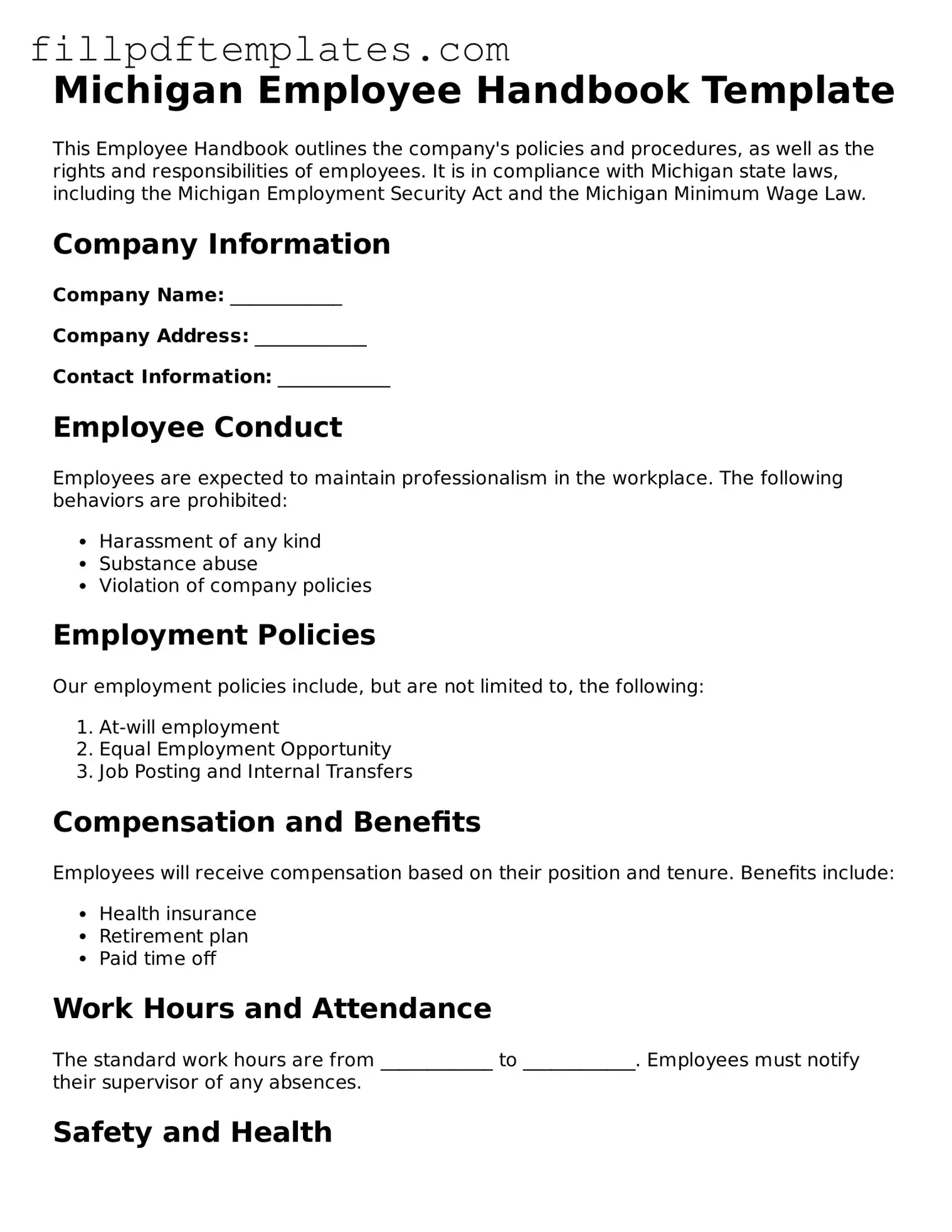Michigan Employee Handbook Template
This Employee Handbook outlines the company's policies and procedures, as well as the rights and responsibilities of employees. It is in compliance with Michigan state laws, including the Michigan Employment Security Act and the Michigan Minimum Wage Law.
Company Information
Company Name: ____________
Company Address: ____________
Contact Information: ____________
Employee Conduct
Employees are expected to maintain professionalism in the workplace. The following behaviors are prohibited:
- Harassment of any kind
- Substance abuse
- Violation of company policies
Employment Policies
Our employment policies include, but are not limited to, the following:
- At-will employment
- Equal Employment Opportunity
- Job Posting and Internal Transfers
Compensation and Benefits
Employees will receive compensation based on their position and tenure. Benefits include:
- Health insurance
- Retirement plan
- Paid time off
Work Hours and Attendance
The standard work hours are from ____________ to ____________. Employees must notify their supervisor of any absences.
Safety and Health
Safety is a priority at _________. Employees must adhere to all health and safety regulations to ensure a safe workplace.
Disciplinary Procedures
Inappropriate behavior may lead to disciplinary actions, which can include:
- Verbal warning
- Written warning
- Termination
Acknowledgment of Receipt
Employees must sign below to acknowledge the receipt of this Employee Handbook:
Employee Name: ____________
Signature: ____________
Date: ____________
